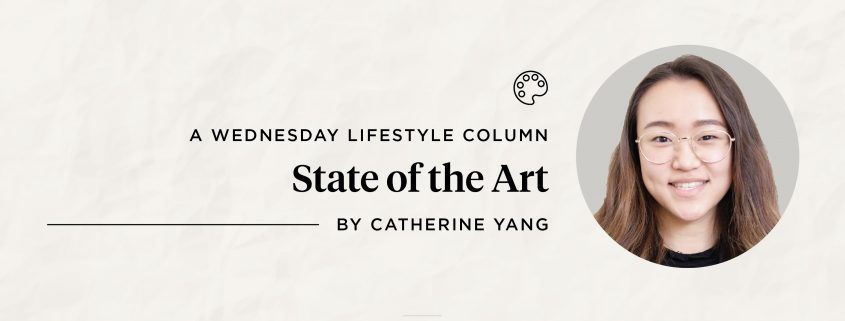State of the Art: Yayoi Kusama’s ‘Alice in Wonderland’ captures Carroll’s fantasy

For a while now, I’ve been trying to condition myself to enter bookstores without making purchases my bank account tells me I should probably forgo. I am successful for the most part, but sometimes — when I find a gorgeous vintage cover or a discount I can’t turn down — I capitulate to my book-gluttonous tendencies.
Last week, during my most recent visit to The Last Bookstore in downtown Los Angeles, a most singular and brilliant book caught my eye: “Lewis Carroll’s Alice’s Adventures in Wonderland with artwork by Yayoi Kusama.” I gasped audibly, deliberated for minutes, then bit the bullet and bought the book.
According to my bemused parents, I spent a spell of my childhood watching Disney’s “Alice in Wonderland” as many as three times a day (in retrospect, the film is chock-full of disturbing, drug-fueled imagery I’m surprised didn’t scar me as a kid).
But regardless of whether I psychologically repressed certain scenes, “Alice in Wonderland” is one of those stories that’s stuck with me through the years and taught me to see the world through rose-colored glasses.
Eighty-nine-year-old Japanese artist Kusama is known for doing the same. Best known for her “Infinity Mirrored Room,” the woman nicknamed the Princess of Polka Dots said she turned to art as an escape from a rare mental illness that has caused her to see colorful fields of dots and flashes of light since childhood. Although her works represent visions from her inner mindscape, they appear as abstractions to everyone else. With Carroll’s writing similarly tapping into the psyche of the creator, his words and Kusama’s art are a match made in heaven.
Both literally and artistically, her vision is inherently mind-bending in a way that comes to perfectly embody Carroll’s fascination with fantasy. There is something quite haunting about how effortlessly their two hallucinogenic, all-encompassing styles complement one another. Her images are interspersed throughout the text, which playfully experiments with boldness and size to create a surreal clarity and unapologetic vivacity.
The joint project is a masterpiece. Disorienting, foreboding spirals accompany readers as Alice contemplates whether her dizzying plunge down the rabbit hole will ever come to an end. A two-page spread of hypnotizing monochromatic patterns repeated to infinity immediately follow the moment Alice finishes the little bottle labeled, “Drink me.”
Psychedelic mushrooms blossom across the pages of her encounter with the Caterpillar. An explosion of neon abstraction, fearful yet mesmerizing, jumps out of the page upon the Queen’s command, “in a voice of thunder.” Kusama’s art also stunningly captures the feelings of confusion, panic, defeat and triumph that Carroll’s storytelling explores.
The final page of the book, a flap of vivid yellow mottled with dots, bears a declaration: “I, Kusama, am the modern Alice in Wonderland.” It’s bold and sweeping, but the parallels between Kusama and Carroll’s heroine are undeniable.
Her iconic surrealist imagery overtakes every page, so the themes of the story are rendered larger than life. Flipping the pages, the reader is compelled to descend into madness and chaos right alongside our two protagonists, Alice and Kusama, while watching the world contort through their eyes.
At its core, “Alice in Wonderland” is universal because it is concerned with the way adults still have the ability — in dreams or at their most open-minded — to see things the way children do. Kusama’s art attempts to recreate a sense of infinity just as Carroll contends that there are no limits to the human mind, no restraints on imagination. Most importantly, their combined work reminds us that the state of seeing the world with childlike wonder never has to end, just as it hasn’t for Kusama or Carroll.
Perched proudly on my bookcase, it’s a good reminder for me, too, of how places like bookstores and art museums are my Wonderland.
Catherine Yang is a senior writing about art and visual culture. She is also the digital managing editor of the Daily Trojan. Her column, “State of the Art,” runs every other Wednesday.

